ap bio unit 4 review
Cell Communication and Signaling
Overview
- ligands: chemical signals that are sent, received, and responded to by cells to communicate
Types of Cell Signaling
Autocrine Signaling
cell releases a ligand and the ligand is sent to a receptor within the same cell
example: cancer cells release their own growth hormones to trigger its own growth and division

Juxtacrine Signaling
depends on direct contact between cell that is sending signal and cell that is receiving the signal
these cells are connected by a surface receptor
example: plasmodesmata in plants; antigen-presenting cells in human immune systems
- plasmodesmata: small channels that directly connect the cytoplasm of neighboring plant cells to each other, establishing living bridges between cells
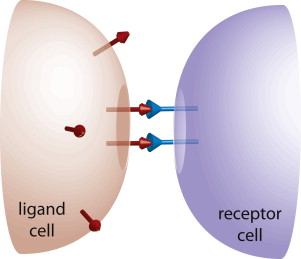
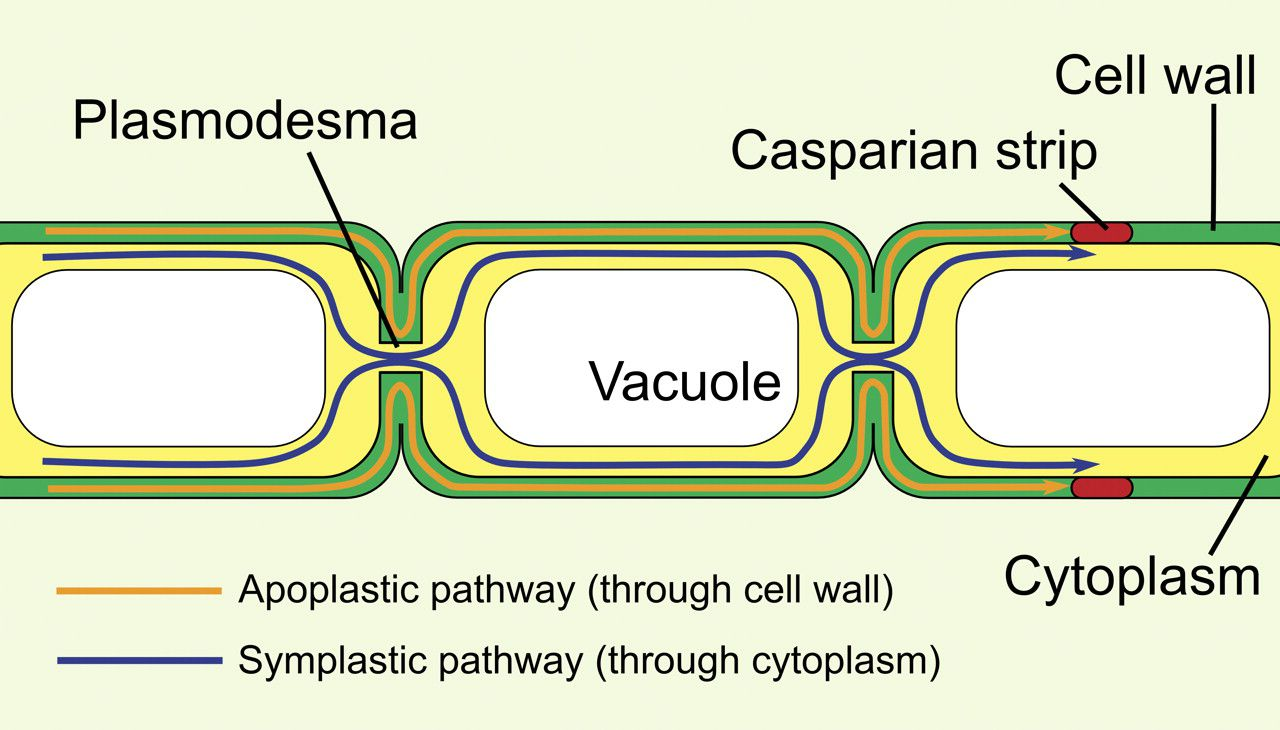
Paracrine Signaling
cell secretes a ligand that travels a short distance to a nearby cell where the ligand is received
ligands are sometimes referred to as local regulators because they only affect cells within a certain vicinity
example: neurotransmitters, which are local regulators that travel a short distance across a synapse to communicate with nearby cells
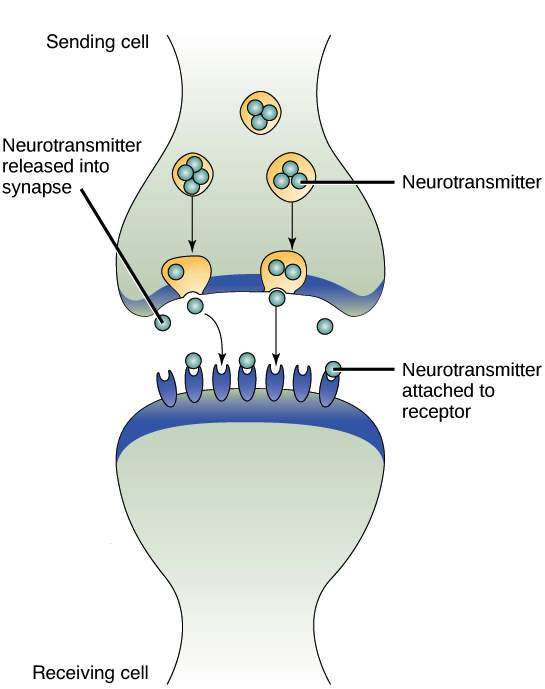
Endocrine Signaling
ligands travel long distances to be received by cells far away
hormones: ligands that travel long distances
example: insulin, which is secreted by the pancreas and travels throughout the circulatory system to trigger a response all over the body
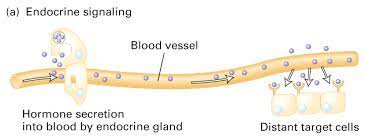
Signal Transduction
signal transduction: determines how a cell responds internally to a signal in the environment
- gene expression, cell growth and division, and release of hormones depend on signal transduction
ligands: sent out by one cell to a target cell
- hydrophilic ligands: cannot cross phospholipid bilayer of cell membrane to enter cell; interact with receptors on cell membrane
- binding of ligand to cell membrane receptor triggers a response inside the cell in a series of chemical reactions
- hydrophobic ligands: can enter cell and bind to intracellular receptors in the cytosol of the cell
- once bound to intracellular receptor, the ligand can then travel across the nuclear membrane to bind to DNA and change the expression of genes
target cell: receives the ligand and responds depending on the ligand’s purpose
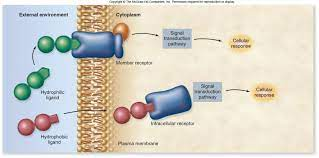
Steps of Signal Transduction
- reception: ligand binds to receptor of cell (cell membrane for hydrophilic or intracellular for hydrophobic) and causes the receptor to change shape, triggering the next step of transduction
- receptors contain ligand-specific domains; if the ligand doesn’t match the domain it cannot bind/cell won’t respond
- examples of receptors: g-protein coupled receptors; receptor tyrosine kinase
- transduction: a series of chemical reactions that help the cell to choose the proper response after the ligand is received; may consist of:
- signaling cascades: series of chemical reactions in which one molecule activates others to amplify the cellular response to the signal; also called signal amplification
- kinases: can transfer phosphate groups to other molecules to activate those molecules
- phosphatases: can remove phosphate groups from other molecules to inactivate those molecules
- enzymes: can produce secondary messengers
- example: enzyme adenylyl cyclase produces secondary messenger cyclic AMP (cAMP) from ATP
- response: the result generated by the ligand; examples of cellular responses include:
- activation of genes by steroid hormones
- opening of ligand-gated ion channels
- initiation of cellular processes (ex. apoptosis)
Disruptions in Signal Transduction Pathways
- receptors are specific to certain ligands; gene mutation can cause receptor to change shape and ti could no longer bind to the specific ligand
- without functional receptor for ligand, the cell can’t respond to it and could cause disorders; examples of disorders include:
- androgen insensitivity syndrome (AIS): when receptors for testosterone are nonfunctional in gonadal tissue (gonads cannot form during embryonic development)
- nephrogenic diabetes insipidus (NDI): portions of structures in kidneys are insensitive to antidiuretic hormone (ADH) and urine production is affected
- molecules in environment can also interrupt signaling pathways; examples:
- cholera toxin binds to g-protein coupled receptors, leading to interruptions that cause life-threatening dehydration
- mutations in gene for adenylyl cyclase can cause disruptions in all pathways that use secondary messenger cAMP
Feedback Mechanisms
negative feedback: returns system to original condition and helps maintain homeostasis; examples include:
- sweating: when body temp. becomes too high, the body will release water in the form of sweat to return the body to a lower internal temp.
- blood glucose levels: when blood sugar gets too high, the pancreas releases insulin to lower blood glucose levels; when blood sugar gets too low, the pancreas releases glucagon, which stimulates liver cells to break down glycogen into glucose to raise blood sugar levels
positive feedback: magnifies cellular processes/responses; examples include:
- childbirth: hormone oxytocin stimulates uterine muscle contractions during labor; contraction of uterine muscles triggers production of more oxytocin and contractions get continuously stronger\
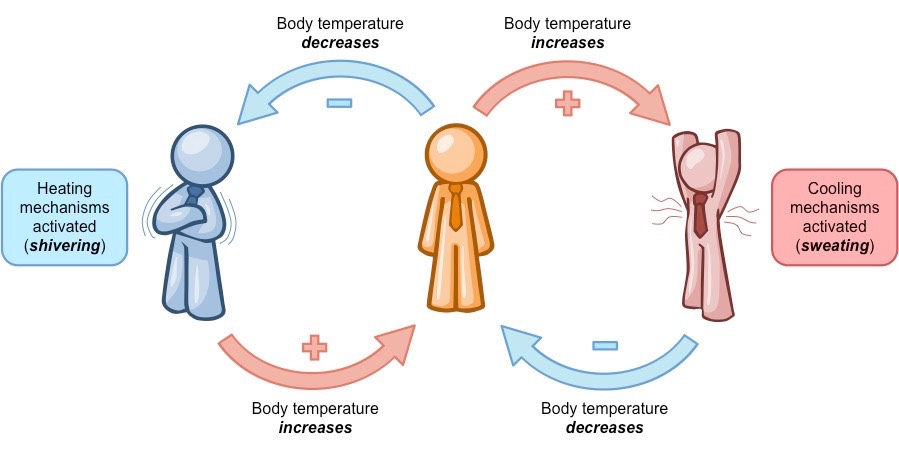
Cell Cycle
Phases of Cell Cycle
Interphase
longest phase of cell cycle; consists of G1, S, and G2
during interphase the cell grows enough so that it has enough material to divide between two daughter cells; cell also replicates genetic material (DNA) during interphase
G1 (growth phase 1): cell grows and prepares for replication of DNA; some cellular organelles (ex. centrioles) are replicated
S (synthesis): DNA is replicated
- at the start: each chromosome consists of one chromatid
- after DNA replication: each chromosome has two identical chromatids are held together by one centromere
- at the end: cell contains twice the amount of DNA it had at the end of G1
G2 (growth phase 2): cell continues to grow and prepare the materials needed for mitosis (ex. proteins that make up spindle fibers)
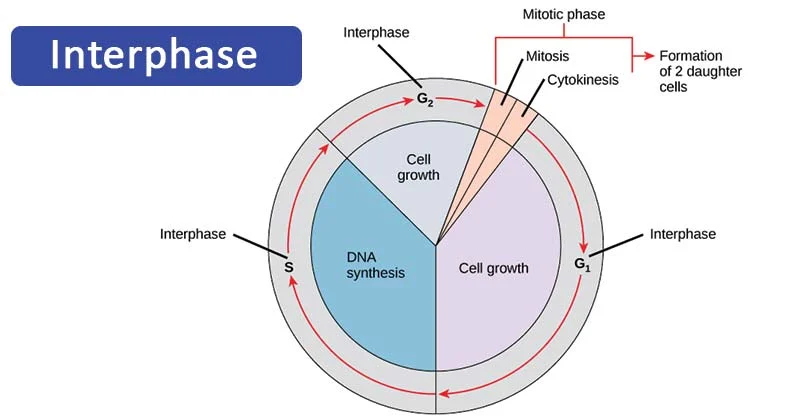
Mitosis
goal of mitosis is to make accurate transfer of DNA from parent cell to the two daughter cells
prophase: nuclear membrane dissolves and the chromosomes dense (becoming more visible); spindle fibers begin to form
prometaphase: fragmentation of the nuclear envelope into many small vesicles that will eventually be divided between the future daughter cells
metaphase: spindle fibers fully attach to centromeres of each chromosome; chromosomes are aligned at the “equator” of the cell
- metaphase plate: center of mitotic spindle
anaphase: each chromosome splits at its centromere into 2 as the fibers begin to shorten and pull the haves to opposite ends of the cell; each chromatid now has its own centromere and is considered a separate chromosome
- the cell has twice the number of chromosomes as it did at the start of the cell cycle at the end of anaphase
telophase: two new nuclear membranes form and each of the two nuclei now contain the same number of chromosomes and the same genetic information as the parent cell

Cytokinesis
- cytokinesis: division of cytoplasm (and its cellular contents) between the two daughter nuclei
- animal cells: a cleavage furrow is formed to partition the cytosol and its contents
- plant cells: they contain a cell wall; a cell plate is built within the dividing cell to provide new cell wall material for each daughter cell
Non-Dividing Cells
- cells may stop dividing temporarily or permanently if they have reached their full mature state or do not have the proper environmental conditions to divide and grow properly
- G0: non-dividing cells have exited the cell cycle and entered this phase
- cells may enter G0 and leave the phase at any point in the cell cycle if stimulated to do so by molecular signals
Regulation of Cell Cycle, Cancer, and Apoptosis
- regulation is achieved through checkpoints during the cell cycle; if cells do not reach the conditions of the given checkpoint, they will be sent to G0
- some checkpoints are controlled by cyclins and cyclin-dependent kinases (CDKs)
- CDKs: present at constant levels during cell cycle; can add phosphate groups to other molecules to activate them; are inactive until they bind to cyclin proteins
- levels of cyclin proteins vary throughout cell cycle and reach their max right before mitosis
- mitosis-promoting factor (MPF): formed when cyclins are bound to CDKs; triggers the start of mitosis
- somatic body cells: all cells not involved in sexual reproduction of organisms
- division of somatic cells can be regulated by density-dependent inhibition
- ex. when cells in tissues become too crowded, they stop dividing
- anchorage dependence: exhibited by many somatic cells; cells won’t divide and grow unless they are attached to a surface
- cancer cells: are not regulated by density-dependent inhibition or anchorage dependence; can continue to grow and divide in abnormal conditions
- genes involved in cell cycle regulation:
- proto-oncogenes: propel cell division at a specific rate; necessary for regulated and controlled cellular growth
- oncogenes: mutated proto-ongogenes that can cause constant acceleration of cellular division and lead to formation of tumors
- tumor suppressor genes: code for proteins that detect mutations in cells that may cause tumors to develop
- if a single tumor suppressor gene allele mutates, the cell will still have one functional TSG allele
- if both TSG alleles are mutated, the growth of a tumor may occur
Apoptosis
- apoptosis: programmed cell death
- may be triggered by:
- cell acquiring a mutation that causes cancer
- during embryonic development to ensure that various organs/structures develop (ex. hands aren’t webbed due to apoptosis)